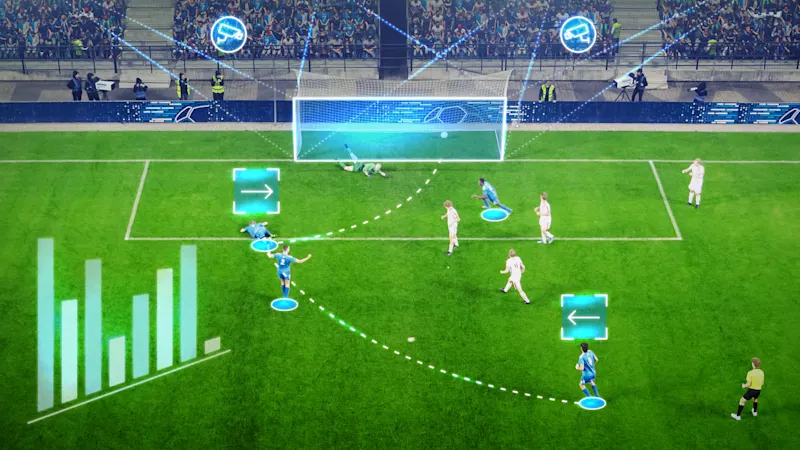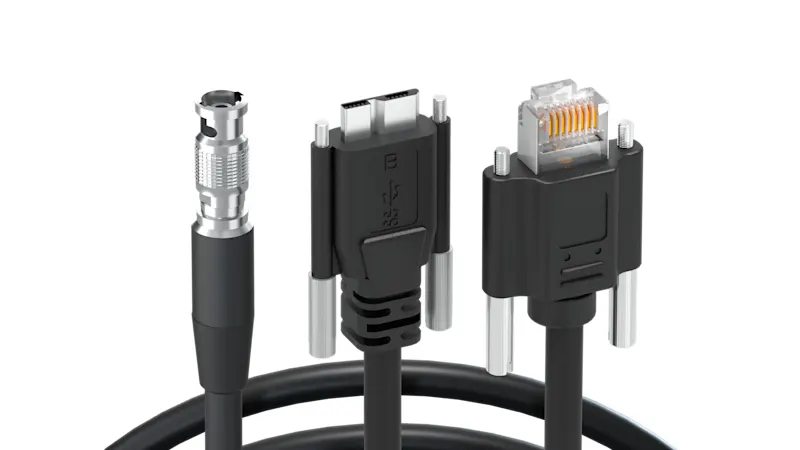GigE Vision 2.0: The Simple Solution for Multi-Camera Systems
GigE Vision 2.0 revolutionizes industrial image processing by synchronizing multi-camera systems more precisely and enabling real-time processing and multi-camera control. This is crucial in the industry when it comes to precise measurements, motion tracking, or the coordination of complex image information.
What does GigE Vision 2.0 offer?
GigE Vision 2.0 offers various options for multi-camera systems and real-time processing. The most important components of the standard are Precision Time Control and Action Commands.
Precision Time Control (PTP)
An important component of the GigE Vision 2.0 standard is the IEEE 1588 Precision Time Protocol, or PTP for short. PTP is a network protocol for precise time synchronization between multiple cameras in a network. For PTP to work, your camera models must be PTP-compatible. The PTP-compatible industrial cameras first determine among themselves which of them has the most accurate clock. PTP works with two types of clocks - one is the master clock and the others work as slave clocks:
Master clock: Ideally, the master clock is controlled by a GPS receiver. This allows it to synchronize to the coordinated universal time - or UTC time.
Slave clocks: The other cameras synchronize with the camera that acts as the master clock until they all work with the same precise system time - measured in nanoseconds.
Thanks to PTP, all cameras work with the same system time. This means that all individual cameras record each image at exactly the same time.
Action commands
GigE Vision cameras have been able to receive and respond to so-called action commands since the earliest stages of development.
An action command is an Ethernet packet that can be sent from a network client to multiple recipients in a network. The most important use case for the action command is triggering an image acquisition over a network. In the past, triggering multiple GigE cameras simultaneously required a cable connection via the camera's digital I/O port. A cable connected each individual camera to a trigger source.
With GigE Vision 2.0, it is now possible to add a PTP timestamp to the action command to specify the exact system time at which the action command should be executed. This is called a Scheduled Action Command . The Scheduled Action Command helps to restore real-time behavior without using physical trigger lines.
GigE Vision 2.0 in practice: These applications benefit from the vision standard
Applications requiring synchronized multi-camera control and high-performance image capture cover a broad range, including semiconductor inspection, traffic and transportation, and sports and motion analysis.

Semiconductor inspection
One example of planned action commands in industrial image processing is semiconductor inspection. Semiconductors are transported on a conveyor belt at a uniform speed and pass four industrial cameras in succession, which are aligned perpendicular to the belt. Each camera must capture an image of the semiconductor at the same time in order to precisely combine the individual images into a cohesive overall image. GigE Vision 2.0 ensures this synchronization with microsecond precision.

Traffic and transportation
Powerful, multi-camera systems are used in the area of traffic and transportation to detect red light violations, for example:
A camera triggers when a vehicle crosses the stop line at a red traffic light.
At the same time, a second camera on the opposite side of the road checks whether the vehicle has actually crossed the road or just the stop line.
The precise time stamp enables the images to be assigned so that authorities can check for violations and take action.

Sports and motion analyses
In many modern stadiums, there are several cameras with multi-camera control that record a soccer match from different angles, for example. The cameras all record an image at exactly the same time. These synchronized images are then combined to create a 3D image. This creates a 360-degree view of the game. This is not only a nice gimmick for soccer fans, but also a practical analysis tool for coaches.
Image synchronization & real-time processing with GigE 2.0
Thanks to the GigE Vision 2.0 standard and PTP, several cameras within an image processing system can be triggered synchronously with a single software command. An additional hardware trigger is not necessary. This reduces both the system costs and the installation effort, especially for cameras that use Power over Ethernet. With GigE Vision 2.0, you can use a single-cable solution as it combines four essential functions: power supply, control, image capture, and synchronization.
Our products with GigE interface
Build your complete GigE vision system in our Vision System Configurator .


